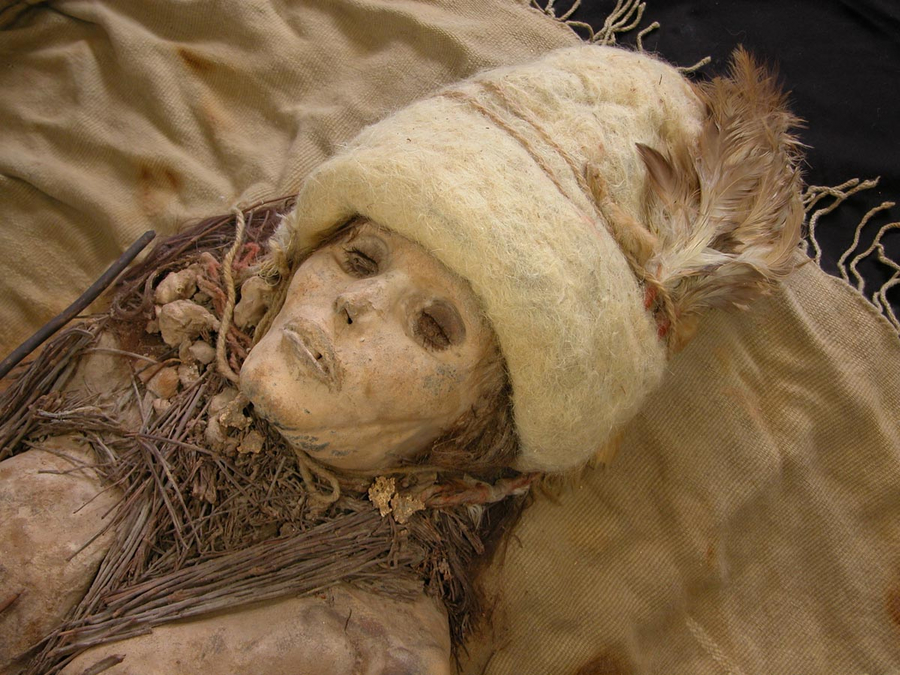
Cheese crumbs were found on neck and chest of the female mummy called „Beauty of Xiaohe“. Max Planck researchers now know more about the recipe of this kefir cheese. Image courtesy of Y. Liu and Y. Yang
Usually, Andrej Shevchenko's research group at the MPI-CBG in Dresden analyzes proteins and lipids in cells of fruit flies or nematodes. Recently, they had amorphous clumps of some organic material of unknown origin in their machines that their analyses identified as a kefir cheese from the early Bronze Age - and thus are the eldest cheese remains ever found. The 4000 year-old cheese crumbs were collected from the neck and chest of mummified bodies during archaeological excavations at the cemetery of Xiaohe in Xinjiang, China. The quantitative proteomics approach revealed: The cheese, like kefir, was produced by adding a mix of bacteria and yeast as a dairy fermentation method.
To produce the cheese, bacteria and yeast were added - unlike today, when it's common to add rennet. „This did not require slaughtering the livestock – that's a big advantage of this method“, says Shevchenko. Kefir fermentation yields a probiotic beverage known as kefir, or, if fermented longer, a cheese. Both contain little to no lactose, compared to raw milk, which must have been ideal for the local population who usually show a high degree of lactose intolerance.
New perspectives in archaeometry
"The Mass Spectrometry Facility has taken an exceptional road, which was never planned and actually triggered by an eMail we received from a Chinese archaeology professor", says Anna Shevchenko, leader of the facility. The eMail was sent by Yimin Yang, and it was his idea to use high-end quantitative proteomics to analyze the cheese crumbs from the ancient cemetery, so he send the first samples to Dresden. "We have been developing methods of identifying proteins from organisms with unsequenced genomes and wild-bred species and had a certain accomplishments record in this field".
This is really pioneering work: „Current analytic methods in archaeological science are usually based on DNA and lipid analysis, which are often useless for analysis of ancient organic masses. Proteins are ignored because of the common believe they are totally degraded and also difficult to extract. Our work opens new perspectives in analysis of ancient material“, continues Anna Shevchenko. In contrast to often used lipids, proteins are information-rich molecules: their sequences may bear hallmarks of processing activities, like fermentation.
Yimin Yang, Anna Shevchenko, Andrea Knaust, Idelisi Abuduresule, Wenying Li, Xingjun Hu, Changsui Wang, Andrej Shevchenko:
Proteomics Evidence for Kefir Dairy in Early Bronze Age ChinaJournal of Archaeological
ScienceDOI: 10.1016/j.jas.2014.02.005